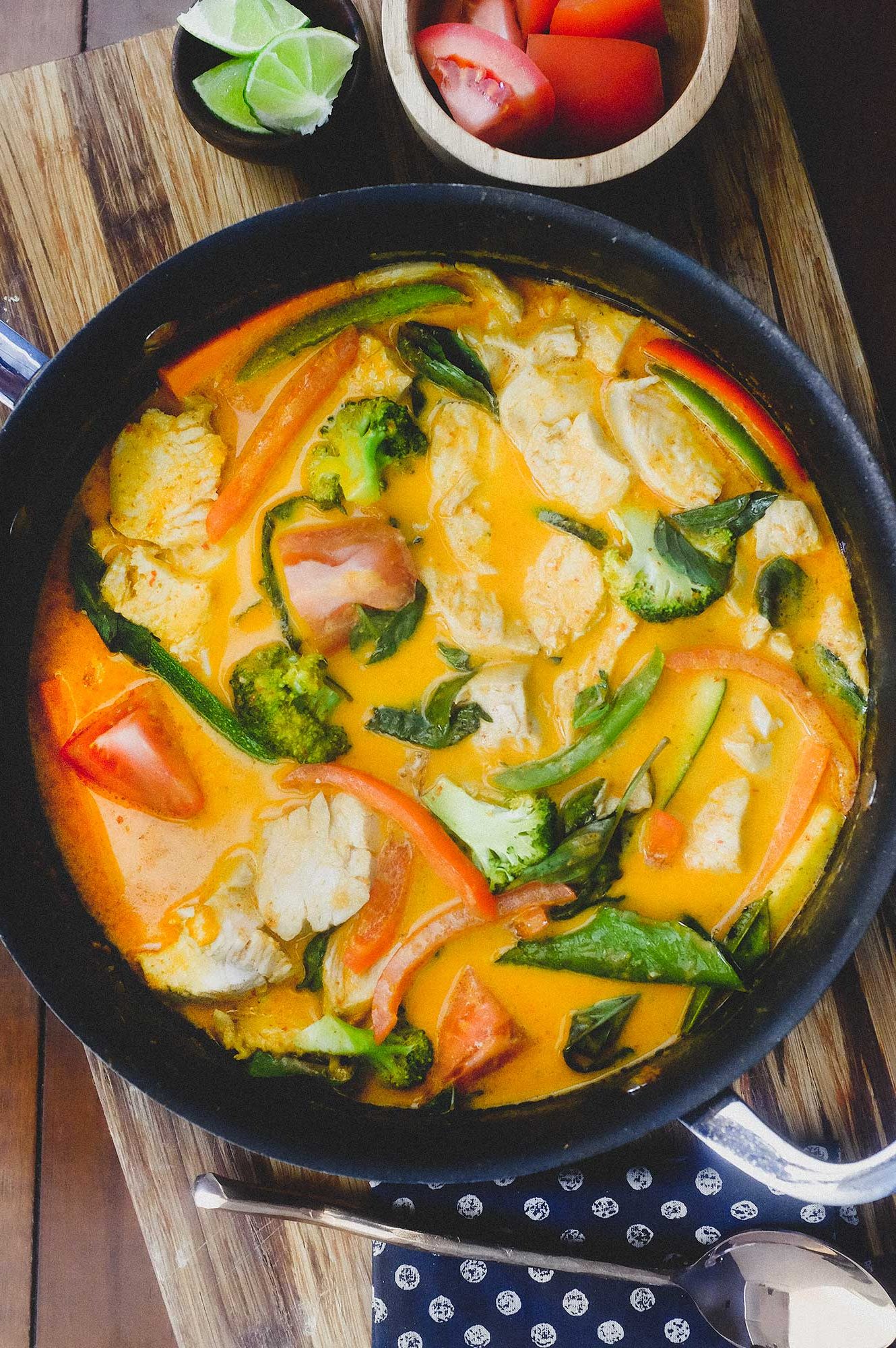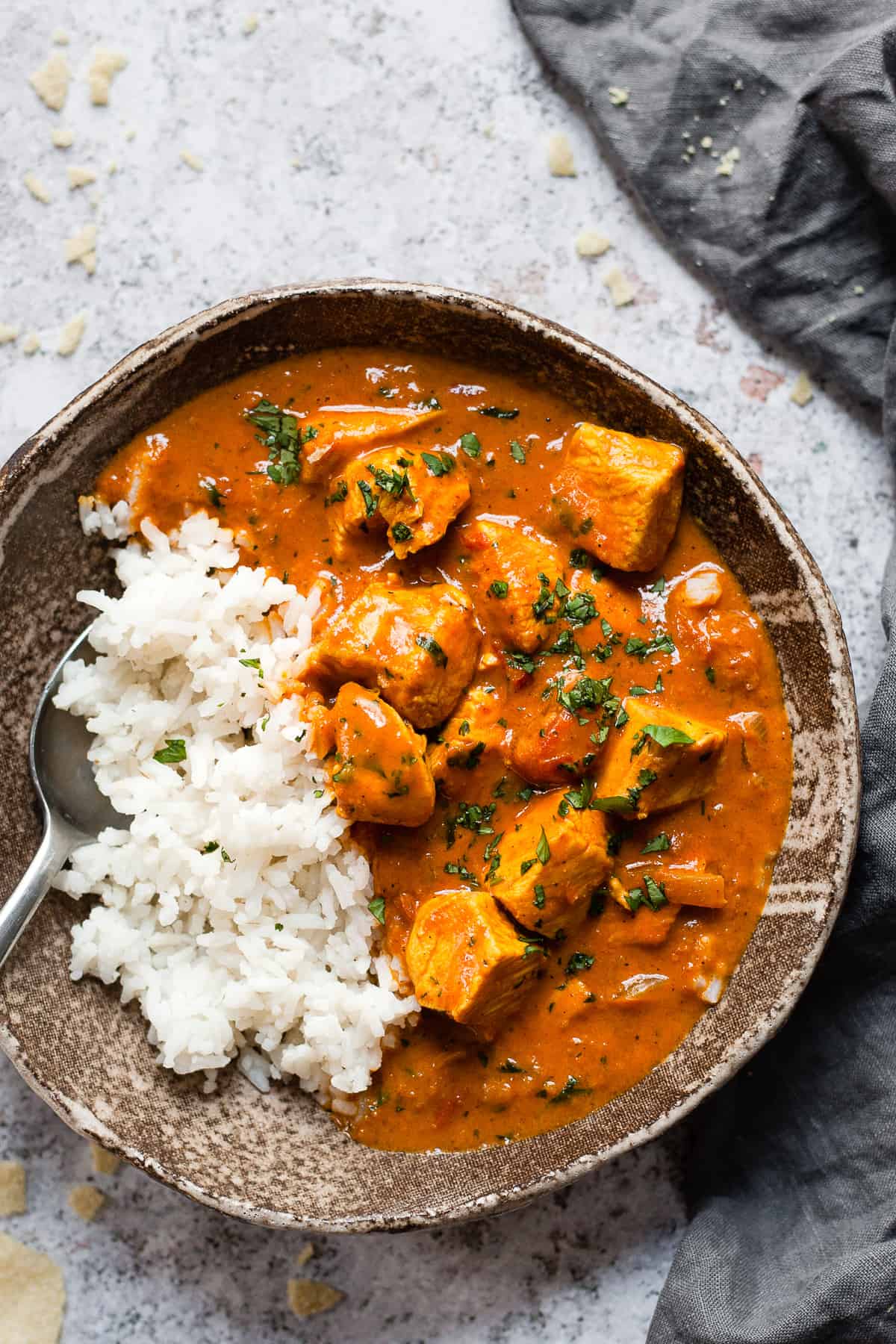Learn: Authentic Thai Curry Recipes for Beginners

Are you ready to embark on a culinary adventure that will transport your taste buds to the vibrant streets of Bangkok? Imagine the aroma of lemongrass, the zing of kaffir lime, and the warmth of chilies wafting through your kitchen. Welcome to the world of authentic Thai curry recipes for beginners. Whether you're a seasoned cook or a novice in the kitchen, these recipes will guide you through the creamy, spicy, and aromatic landscape of Thai cuisine. Let's dive in!
Understanding Thai Curry: The Basics
Before we get our hands dirty, let's understand the essence of Thai curry. Thai curries are known for their rich, complex flavors, achieved through a harmonious blend of herbs, spices, and aromatics. The foundation of any Thai curry is the curry paste, a concentrated mixture of ingredients that sets the tone for the dish.
The Magic of Curry Paste
Curry paste is the heart and soul of Thai curry. It's a blend of fresh ingredients like chilies, garlic, galangal, lemongrass, and shrimp paste, among others. The paste is then combined with coconut milk to create a creamy, aromatic base for the curry.
Types of Thai Curry
Thai cuisine boasts a variety of curries, each with its unique flavor profile:
- Green Curry (Gaeng Keow Wan): Known for its vibrant green color and spicy kick, green curry is made with fresh green chilies, Thai eggplant, and kaffir lime leaves.
- Red Curry (Gaeng Phed): This spicy Thai curry gets its color from red chilies and is often made with meat or seafood.
- Yellow Curry (Gaeng Karee): Milder than its green and red counterparts, yellow curry is influenced by Indian cuisine and features turmeric and curry powder.
- Massaman Curry (Gaeng Massaman): A rich, mild curry with Persian influences, Massaman curry includes potatoes, peanuts, and spices like cinnamon and cardamom.
Essential Ingredients for Authentic Thai Curry
To create an authentic Thai curry, you'll need a few key ingredients. Don't worry, you can find most of these at your local grocery store or online.
- Coconut Milk: The base of most Thai curries, coconut milk adds creaminess and richness.
- Fish Sauce (Nam Pla): A staple in Thai cuisine, fish sauce adds a salty, umami flavor.
- Palm Sugar: This natural sweetener balances the heat and saltiness in Thai curries.
- Kaffir Lime Leaves: These fragrant leaves add a citrusy, aromatic note to curries.
- Galangal: Similar to ginger but with a more citrusy flavor, galangal is a key ingredient in curry paste.
- Lemongrass: This aromatic herb adds a lemony, slightly floral flavor to curries.
Step-by-Step Guide: Green Curry Recipe
Let's start with a classic: green curry. This recipe serves 4 and takes about 30 minutes to prepare.
Ingredients
- 2 cups coconut milk
- 2 tbsp green curry paste
- 1 lb chicken breast, sliced
- 1 cup Thai eggplant, quartered
- 1 red bell pepper, sliced
- 1 cup bamboo shoots, drained
- 1/2 cup Thai basil leaves
- 4 kaffir lime leaves
- 2 tbsp fish sauce
- 1 tbsp palm sugar
- 1/4 cup water
- 2 tbsp vegetable oil
Instructions
- Heat the Oil: In a large pan, heat the vegetable oil over medium heat.
- Add Curry Paste: Add the green curry paste and stir-fry for 1 minute until fragrant.
- Pour in Coconut Milk: Gradually add the coconut milk, stirring continuously to combine with the curry paste.
- Add Chicken: Add the sliced chicken breast and cook until it's no longer pink.
- Add Vegetables: Throw in the Thai eggplant, red bell pepper, and bamboo shoots. Cook for 5 minutes until the vegetables are tender.
- Season: Add the fish sauce, palm sugar, and water. Stir well to combine.
- Simmer: Reduce the heat and let the curry simmer for 10 minutes.
- Finish with Herbs: Add the Thai basil leaves and kaffir lime leaves. Stir and remove from heat.
- Serve: Serve the green curry hot with steamed jasmine rice.
:max_bytes(150000):strip_icc()/vegetarian-pad-thai-3217746-10-10-5b0da1deeb97de003761334d.jpg)
Tips for Perfecting Your Thai Curry
Cooking Thai curry is an art, but with these tips, you'll be a pro in no time.
- Adjust the Heat: Thai curries can be spicy. Start with a small amount of curry paste and adjust to your taste.
- Balance the Flavors: Thai cuisine is all about balance. Taste your curry and adjust the seasoning with more fish sauce, palm sugar, or lime juice as needed.
- Use Fresh Ingredients: Fresh herbs and spices make a world of difference in the flavor of your curry.
- Don't Overcook the Vegetables: Thai curries are best when the vegetables are tender but still have a slight crunch.
Exploring More: Red Curry Recipe
Ready to try another classic? Let's dive into red curry. This recipe serves 4 and takes about 30 minutes to prepare.
Ingredients
- 2 cups coconut milk
- 2 tbsp red curry paste
- 1 lb shrimp, peeled and deveined
- 1 cup Thai eggplant, quartered
- 1 red bell pepper, sliced
- 1 cup bamboo shoots, drained
- 1/2 cup Thai basil leaves
- 4 kaffir lime leaves
- 2 tbsp fish sauce
- 1 tbsp palm sugar
- 1/4 cup water
- 2 tbsp vegetable oil
Instructions
- Heat the Oil: In a large pan, heat the vegetable oil over medium heat.
- Add Curry Paste: Add the red curry paste and stir-fry for 1 minute until fragrant.
- Pour in Coconut Milk: Gradually add the coconut milk, stirring continuously to combine with the curry paste.
- Add Shrimp: Add the shrimp and cook until they turn pink.
- Add Vegetables: Throw in the Thai eggplant, red bell pepper, and bamboo shoots. Cook for 5 minutes until the vegetables are tender.
- Season: Add the fish sauce, palm sugar, and water. Stir well to combine.
- Simmer: Reduce the heat and let the curry simmer for 10 minutes.
- Finish with Herbs: Add the Thai basil leaves and kaffir lime leaves. Stir and remove from heat.
- Serve: Serve the red curry hot with steamed jasmine rice.

Conclusion
Congratulations! You've just taken your first steps into the world of authentic Thai curry recipes for beginners. From the vibrant green curry to the rich red curry, these recipes are your passport to the flavors of Thailand. Remember, the key to a great Thai curry is balance—a harmony of heat, saltiness, sweetness, and aromatics.
Don't be afraid to experiment with different ingredients and adjust the seasoning to your taste. Thai cuisine is all about personal preference and creativity. So, grab your apron, gather your ingredients, and let the culinary adventure begin!
FAQs
What is the difference between Thai curry and Indian curry? Thai curries are typically lighter and more aromatic, with a focus on fresh herbs and spices. Indian curries, on the other hand, often feature a blend of dried spices and are generally thicker and richer.
Can I make Thai curry paste at home? Yes, you can make Thai curry paste at home using a food processor or mortar and pestle. Combine ingredients like chilies, garlic, galangal, lemongrass, and shrimp paste until you have a smooth paste.
What can I use instead of fish sauce in Thai curry? If you prefer a vegetarian or vegan option, you can substitute fish sauce with soy sauce or tamari. However, the flavor will be slightly different.
How can I make my Thai curry less spicy? To make your Thai curry less spicy, reduce the amount of curry paste or chilies in the recipe. You can also add more coconut milk to dilute the heat.
What is the best way to store leftover Thai curry? Store leftover Thai curry in an airtight container in the refrigerator for up to 3 days. You can also freeze it for up to 3 months. Reheat gently on the stove or in the microwave.
0 Response to "Learn: Authentic Thai Curry Recipes for Beginners"
Post a Comment